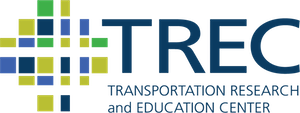Friday Transportation Seminars at Portland State University have been a tradition since 2000. We've opened up PSU Transportation Seminars to other days of the week, but the format is the same: Feel free to bring your lunch! If you can't join us in person, you can always watch online via Zoom.
PRESENTATION ARCHIVE
THE TOPIC
State departments of transportation (DOTs) are increasingly focusing on reducing greenhouse gas (GHG) emissions, especially with new regulations like the Buy Clean Acts in California, Oregon, and Washington. This project, in collaboration with the Washington State Department of Transportation (WSDOT), aims to assess the agency's carbon emissions through a life cycle assessment of construction materials such as cement, concrete, steel, and asphalt, which are now under heightened scrutiny.
While WSDOT has already implemented strategies to reduce Scope 1 and Scope 2 emissions (related to direct and energy-related activities), there has been limited focus on Scope 3 emissions—those generated upstream in the supply chain. This life cycle assessment reveals that Scope 3 emissions from materials used in WSDOT’s roadways contribute over half of the agency’s total GHG emissions, averaging 310 thousand metric tons of CO2 equivalent annually.
The study emphasizes the critical need to address these emissions and sets ambitious reduction targets for WSDOT: a 50% reduction below 2020 levels by 2030 and a 90% reduction by 2050. These findings and recommendations provide a pathway for WSDOT to lead in sustainable infrastructure practices, aligning with broader transportation goals to mitigate environmental impacts from construction materials.
KEY LEARNING OUTCOMES
- State Department of Transportations need better data collection and management approaches to enable greenhouse gas emissions accounting for construction materials.
- Scope 3 emissions (mainly in the form of embodied carbon from construction materials) can be as significant as Scope 1 and 2 emissions (i.e., direct emissions from energy use and burning fossil fuels).
- Embodied carbon decarbonization strategies for roadways rely heavily on upstream emissions from producing asphalt, concrete, and steel materials.



